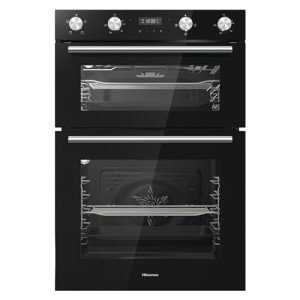The Future of Culinary Convenience: Integrated Ovens and Hobs
In the ever-evolving world of kitchen area design, integrated ovens and hobs are at the forefront of contemporary culinary development. These devices not just guarantee aesthetic appeal but likewise boost functionality and performance, transforming how we prepare our meals. As house owners significantly look for to create seamless, stylish, and easy to use cooking areas, the integration of ovens and hobs offers a perfect service. This post explores what integrated ovens and hobs are, their advantages, and key considerations for those seeking to update their kitchen area.
What Are Integrated Ovens and Hobs?
Integrated ovens and hobs are cooking area home appliances perfectly built into the kitchen cabinetry or counters, instead of standing out as different entities. Integrated ovens are developed to mix into cooking area systems, providing a flush surface with surrounding cabinets. Likewise, integrated hobs are mounted straight into the counter top, producing a structured look. This minimalist design method not just raises the visual appeal of the kitchen however also optimizes readily available space.
Types of Integrated Ovens
Single Ovens: These standalone systems are developed for simplicity and ease of use, including a single cooking chamber and several cooking modes such as baking, barbecuing, and roasting.
Double Ovens: Ideal for larger families or devoted cooks, double ovens provide 2 independent cooking compartments, enabling numerous dishes to be ready at the same time at different temperatures.
Built-in Oven : Blending standard baking and steam cooking, mix ovens provide versatility for various cooking requirements, retaining moisture while guaranteeing completely prepared meals.
Types of Integrated Hobs
Gas Hobs: These hobs allow for accurate temperature level control and immediate heat, making them a preferred among professional chefs and cooking lovers.
Induction Hobs: Known for their effectiveness and safety, induction hobs utilize electro-magnetic energy to heat pots and pans directly. They are quick to heat and cool down quickly, reducing the threat of burns.
Electric Hobs: Featuring smooth ceramic or glass surface areas, electric hobs are simple to tidy and offer an even heat distribution for a variety of cooking designs.
Benefits of Integrated Ovens and Hobs
1. Space Optimization
With the pattern of smaller sized living areas and open-concept homes, integrated home appliances help take full advantage of cooking area space. By fitting perfectly into cabinets, kitchen areas can appear bigger and more open, minimizing mess and enhancing visual appeal.
2. Aesthetic Appeal
Integrated ovens and hobs offer a smooth, modern appearance that fits well within different style styles. The capability to customize cabinetry guarantees that homeowners can achieve a cohesive look that matches their design, whether contemporary, conventional, or something in between.
3. Improved Functionality
Integrated appliances often feature advanced features such as clever innovation, self-cleaning options, and different cooking modes. These improvements not only improve the cooking procedure however likewise enhance use, making cooking an enjoyable experience.
4. Safety Features
Integrated hobs, specifically induction designs, are considered much safer than standard cooking surface areas. They cool off rapidly, reducing the danger of burns, and often include functions like child locks and automatic shut-off for extra safety.
Key Considerations When Choosing Integrated Ovens and Hobs
1. Space and Layout
Before acquiring integrated home appliances, consider the space readily available in your kitchen area. Measure the cabinets and countertops thoroughly to ensure a best fit, enabling sufficient ventilation and installation space.
2. Cooking Needs
Evaluate your cooking habits and choices. If you often captivate or prepare big meals, a double oven might be the best choice. On the other hand, if you're a periodic chef, a single oven may be enough. Likewise, choosing between gas, electric, or induction hobs will depend on your cooking design and convenience level.
3. Energy Efficiency
With increasing energy costs and growing ecological issues, choosing energy-efficient appliances can save money in the long run. Try to find items with high energy scores and features like programmable timers and eco-modes.
4. Quality and Brand
Buying premium home appliances from credible brands makes sure sturdiness and performance. Reading consumer reviews and looking for suggestions can help narrow down the very best options customized to your requirements.
Conclusion

Integrated ovens and hobs are more than just cooking area home appliances; they represent a shift towards a more practical, elegant, and effective method to cooking. As house owners prioritize smooth style, convenience, and advanced features, these integrated options will undoubtedly shape the kitchens of tomorrow. Whether renovating a kitchen or creating a brand-new one from scratch, incorporating ovens and hobs is an investment that guarantees to enhance both cooking experiences and the total visual of the home.
